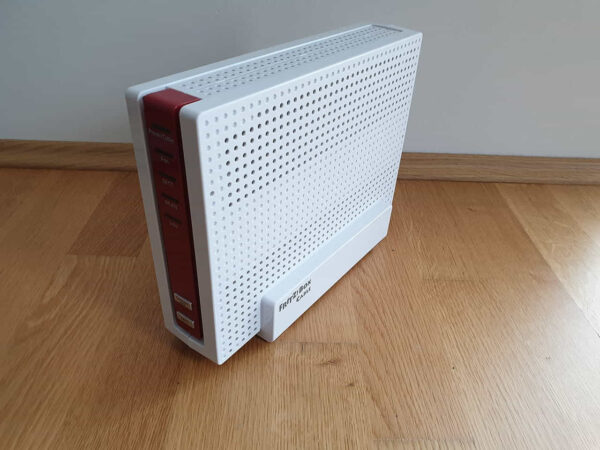✅ Last checked on
In our increasingly interconnected world, a reliable internet connection is paramount. At the heart of this connectivity lies the humble yet crucial device known as the network modem. Whether you’re a tech-savvy individual or just starting to explore the world of networking, this guide is here to demystify network modems and provide you with the insights you need to navigate the digital landscape seamlessly.
The Basics of Network Modems

A network modem, short for modulator-demodulator, is a device that bridges the gap between your home network and your Internet Service Provider (ISP). Its primary function is to modulate digital data from your computer into analog signals that can be transmitted over telephone or cable lines. Additionally, it demodulates incoming analog signals from your ISP back into digital data that your devices can understand.
How Network Modems Work
Think of a network modem as a translator. When you send an online request, such as opening a website or streaming a video, the modem translates your digital command into analog signals that travel through the ISP’s infrastructure. These signals traverse various network nodes before reaching their destination. When the response is generated, your modem performs the reverse translation, converting analog signals back into digital data for your device to process.
Types of Network Modems
Network modems come in several varieties, each catering to different connection technologies:
1. DSL Modems
DSL (Digital Subscriber Line) modems are tailored for homes connected via telephone lines. They offer high-speed internet access by utilizing frequencies that don’t interfere with voice calls.
2. Cable Modems
Cable modems, on the other hand, deliver internet access over cable TV lines. They are widely used and provide higher speeds compared to DSL modems.
3. Fiber Optic Modems
Fiber optic modems exploit the incredible speed of light to transmit data through glass fibers. This technology offers unparalleled speed and reliability, making it a favorite for modern internet connections.
4. Dial-Up Modems
While largely outdated, dial-up modems paved the way for home internet access. They use regular telephone lines but are significantly slower than other modem types.
Setting Up Your Network Modem
Getting your network modem up and running is a straightforward process:
- Gather Equipment: You’ll need your modem, a power adapter, and the necessary cables.
- Connect Cables: Plug one end of the coaxial or DSL cable into the modem and the other into your wall outlet. For DSL, use a phone cable.
- Power Up: Connect the modem to a power source and wait for it to initialize.
- Establish Connection: Follow the instructions provided by your ISP to activate your modem and establish an internet connection.
Troubleshooting Common Issues
Network connectivity issues can be frustrating, but a few basic troubleshooting steps can often resolve them:
- Restart: Unplug the modem, wait for a minute, and then plug it back in. This can reset the device and resolve minor glitches.
- Check Cables: Ensure all cables are securely connected to their respective ports.
- Contact ISP: If issues persist, get in touch with your ISP. They can diagnose and address more complex problems.
Frequently Asked Questions (FAQs)
Can I use my own modem instead of renting one from my ISP?
Yes, many ISPs allow you to use your own modem. Make sure it’s compatible with your chosen plan and technology.
How do I know if I need a new modem?
If you’re experiencing slow speeds, frequent disconnections, or your modem is several years old, it might be time for an upgrade.
What’s the difference between a modem and a router?
A modem connects you to the internet, while a router creates a local network for your devices to communicate with each other and the internet.
Can I use a cable modem with a DSL connection?
No, cable modems and DSL modems are designed for different types of connections and are not interchangeable.
Do I need a modem for fiber optic internet?
Yes, you’ll need a modem specifically designed for fiber optic connections to access the internet.
How can I improve my Wi-Fi speeds?
Position your router in a central location, reduce interference from other devices, and consider upgrading to a faster internet plan.
Conclusion
Network modems play an indispensable role in our digitally connected lives. From translating data signals to enabling high-speed internet access, they’re the unsung heroes of modern communication. By understanding how modems work and choosing the right type for your connection, you can ensure a seamless online experience. So, whether you’re browsing, streaming, or working remotely, remember that your trusty network modem is working behind the scenes to keep you connected.